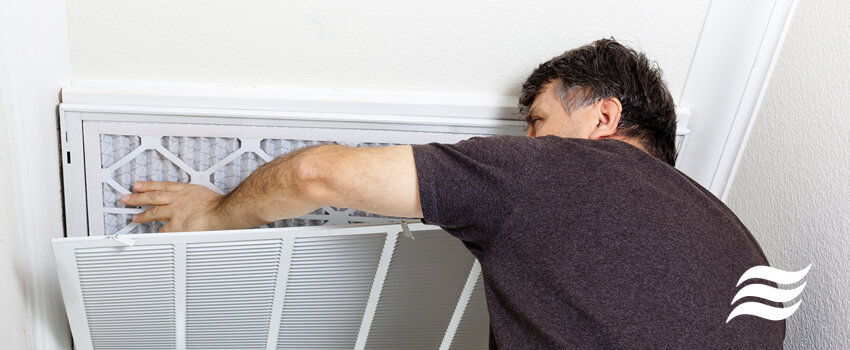
Easy Ways To Improve Your HVAC Efficiency
No, you're not imagining it – your HVAC is one of the most energy-hungry systems in your home! A recent study by the U.S. Energy Information Association found that heating and air conditioning accounts for 40% of the average home's energy consumption.
Keeping your home at a comfortable temperature and humidity doesn't have to cost a fortune though – there are steps you can take to maximize your HVAC system’s efficiency.
By improving your HVAC's working efficiency, you can potentially save yourself a significant amount of money.
The U.S. Department of Energy (DOE) claims the average American home can cut their energy usage by 20-50% by “combining proper equipment maintenance and upgrades with recommended insulation, air sealing, and thermostat settings”.
So, here are our top tips to help you save money by improving your HVAC efficiency:
Use the right kind of air filter
We've covered the pros and cons of different air filter types already, but it's worth saying again – make sure you have the right type of filter for your system. You already know we're going to say avoid the super cheap, flimsy filters – but that doesn't mean we recommend the more expensive options on the market either.
You need the right filter for your system!
In some older systems, the high-efficiency filters available might cause too much drag in your system's airflow. Your best bet? Check your HVAC system’s manual for recommendations, or ask your HVAC technician during your next checkup.
Use your fans
Have ceiling fans installed? Use them! If you have desktop fans, put those to good use too.
During the summer, hot air hangs around and makes everyone uncomfortable – including your HVAC system. With increased heat and humidity stagnating in your rooms, your AC unit has to work even harder (and spend more energy) to get your living space how you want it.
Ceiling fans are a great way of getting uncomfortably warm air circulating and cooled down. The DOE says you can improve inside temperatures by 4 degrees by using a ceiling fan – all without touching your thermostat.
Clean your air filters
If we've said this once, we've said it a thousand times – your filters need to be cleaned once a month (sometimes every three, depending on your unit).
When your system is working with a dirty filter, it takes more energy to get the air flow the system needs to maintain the temperature you want. When your system has a clean filter, everything runs a lot smoother.
Try running up a hill with your hand covering your mouth… your system struggles just like you would.
On a side note – not only does it run more efficiently with a clean filter, but the air its pumping out is cleaner too.
Find it difficult to remember to check your air filter? Pop a Post-it note somewhere super obvious that you can't ignore. Or, try setting a reminder on your phone for the same date each month.
Set a moderate temperature
Just because the sun's shining doesn't mean your home needs to be an ice box! Try to maintain a comfortable temperature in your living space – if you're considering putting on a pullover, adjust your thermostat instead.
Upgrade outdated HVAC equipment
If your system is over ten years old, it's going to run up significantly higher bills than a newer model. HVAC efficiency has evolved so much in the last ten years, you'll be amazed at the difference when you upgrade.
If you're shopping around, keep an eye out for units that have the Energy Star certification, this means they've been tried, tested and proven to run at a more efficient energy level (and will save you dollars in the long run).
Get a pre-season HVAC check up
Nothing beats a full maintenance check for improving a HVAC unit's working efficiency. It's best to get your system looked at in the run up to spring and autumn (as you switch from hot to cold use and back again).
During a scheduled maintenance visit, undertaken by certified professionals, each section of your unit will be cleaned, inspected and if necessary, fixed.
